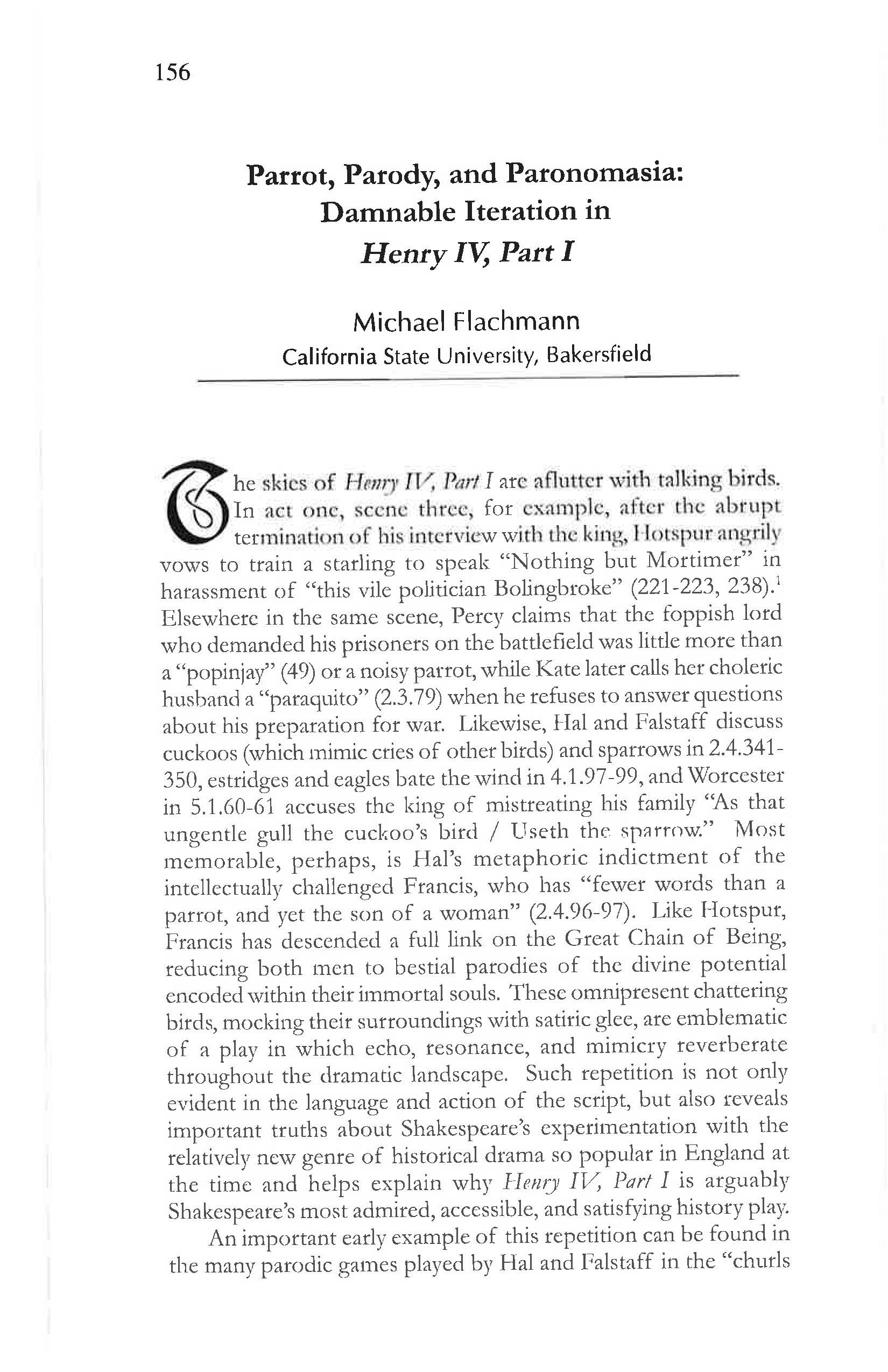Parrot, Parody, and Paronomasia: Damnable Iteration in Henry IV, Part I
Main Article Content
Abstract
The skies of Henry IV, Part I are aflutter with talking birds. In act one, scene three, for example, after the abrupt termination of his interview with the king, Hotspur angrily vows to train a starling to speak “Nothing but Mortimer” in harassment of “this vile politician Bolingbroke” (221-223, 238).1 Elsewhere in the same scene, Percy claims that the foppish lord who demanded his prisoners on the battlefield was little more than a “popinjay” (49) or a noisy parrot, while Kate later calls her choleric husband a “paraquito” (2.3.8779) when he refuses to answer questions about his preparation for war. Likewise, Hal and Falstaff discuss cuckoos (which mimic cries of other birds) and sparrows in 2.4.3410350, estridges and eagles bate the wind in 4.1.97-99, and Worcester in 5.1.60-61 accuses the king of mistreating his family “As that ungentle gull the cuckoo’s bird / Useth the sparrow.” Most memorable, perhaps, is Hal’s metaphoric indictment of the intellectually challenged Francis, who has “fewer words than a parrot, and yet the son of a woman” (2.4.96-97). Like Hotspur, Francis has descended a full link on the Great Chain of Being, reducing both men to bestial parodies of the divine potential encoded within their immortal souls. These omnipresent chattering birds, mocking their surroundings with satiric glee, are emblematic of a play in which echo, resonance, and mimicry reverberate throughout the dramatic landscape. Such repetition is not only evident in the language and action of the script, but also reveals important in the language and action of the script, but also reveals important truths about Shakespeare’s experimentation with the relatively new genre of historical drama so popular in England at the time and helps explain why Henry IV, Part I is arguably Shakespeare’s most admired, accessible, and satisfying history play.
